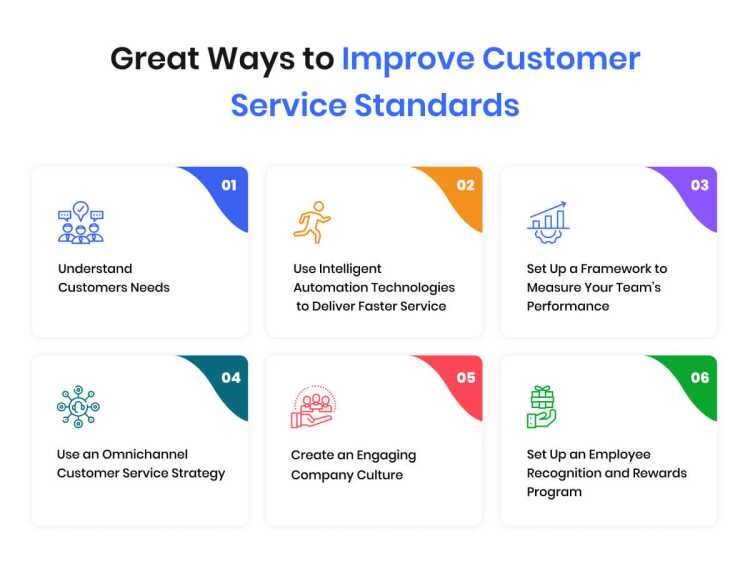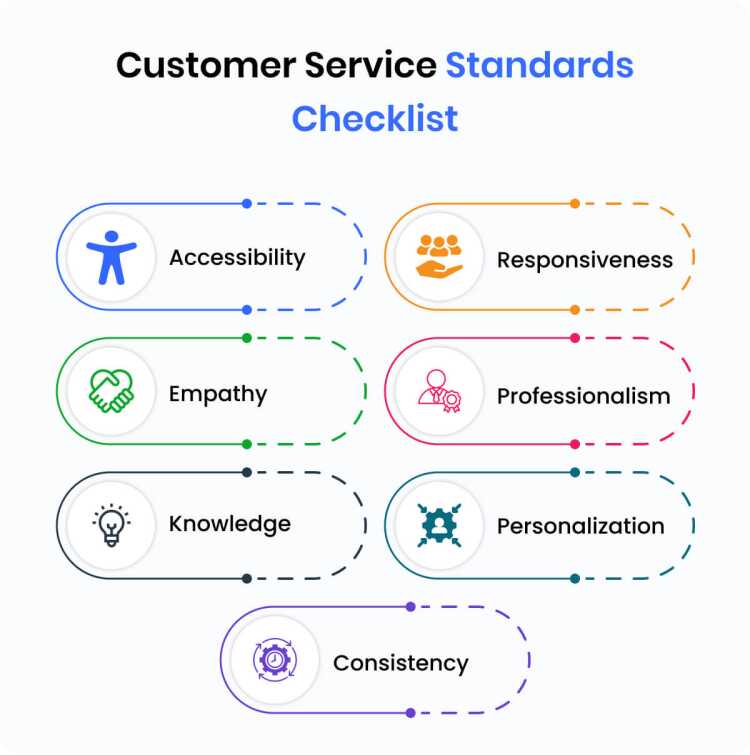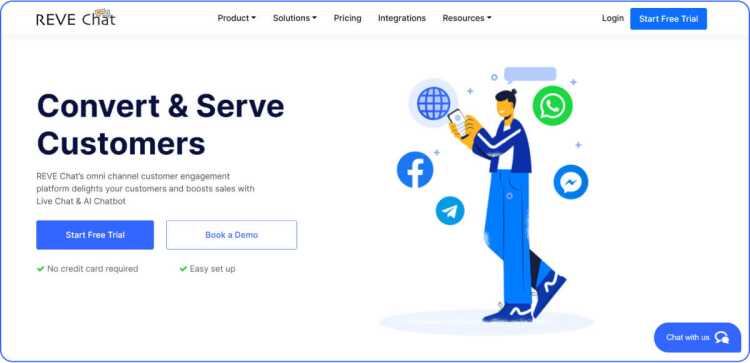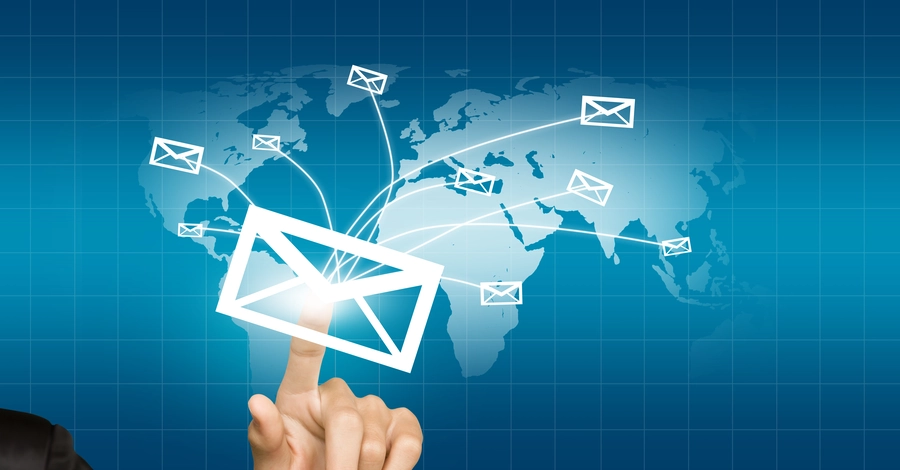Elevate Your Customer Service Standards to Succeed in Business
- March 12, 2023
- 12 mins read
- Listen

Table of Content
When it comes to running a successful business, customer service is one of the most critical components. It can make a big difference between a thriving business and one that struggles to stay afloat.
With so many options available to consumers, businesses must go above and beyond to ensure their customers are satisfied and loyal. This blog post will explore the importance of customer service standards, what they are, and how businesses can implement them to achieve success.
Whether you’re a small business owner or a customer service representative, this post will provide valuable insights and practical tips for delivering exceptional customer service.
So, let’s dive in and discover ways to improve customer service standards!
What is Customer Service Standard?
Customer service standards are the measurable benchmarks organizations set to define and monitor the level of service they provide to their customers.
It helps businesses ensure that their customers receive consistent, high-quality service across all channels of communication and interaction. Customer service standards typically encompass several aspects of the customer experience, including response times, the quality of service provided, problem resolution, and customer satisfaction.
They can be expressed in quantitative terms, such as average response time or percentage of customer complaints resolved, or in qualitative terms, such as providing a friendly and empathetic customer service experience. Establishing and maintaining customer service standards is crucial for organizations that build long-term customer loyalty and satisfaction.
By providing a consistent and high-quality customer service experience, businesses can enhance their reputation, increase customer retention rates, and attract new customers through positive word-of-mouth.
Customer Service Standards Examples
It provides clear guidelines for both customers and employees on what to expect in terms of quality of service. This can help to manage expectations and reduce confusion or misunderstandings.
When customers receive a high level of service, they are more likely to be satisfied and return for future business. This can help to build customer loyalty and improve a business’s reputation.
Here are some examples of customer service standards that businesses can strive to uphold:
- Response time: Respond to customer inquiries within a specified time frame, such as 24 hours or less.
- Personalization: Personalize interactions with customers by using their names and understanding their individual needs.
- Respectful communication: Communicate in a respectful and professional manner, using appropriate language and tone.
- Active listening: Actively listen to customers’ concerns and questions, and respond with empathy and understanding.
- Timeliness: Deliver products or services in a timely manner and notify customers of any delays or issues that arise.
- Quality assurance: Ensure the quality of products and services, and take appropriate measures to rectify any issues or complaints.
- Availability: Be available to customers during business hours, and provide multiple channels for communication, such as phone, email, or chat.
- Knowledgeability: Have knowledgeable staff who can answer customer questions and provide relevant information about products and services.
- Follow-up: Follow up with customers after their interaction to ensure their needs were met and to gather feedback for improvement.
- Problem resolution: Resolve customer complaints and issues quickly and effectively, while keeping the customer informed throughout the process.
How to Improve Customer Service Standards?
Improving customer service standards is vital to succeeding in business. As a business owner, you always keep one thing in mind customers can make and break your business. Besides, you’ll always need to put the customers first to deliver next-level customer service.
Here are some key takeaways to improve the overall customer service standards.
1. Understand Customers Needs
Understanding your customers’ needs is crucial to improving your customer service standards. To improve the customer service experience you need to understand the customer first.
Let’s take a look at some steps you can take to gain a better understanding of your customer’s needs:
- Listen actively: Listen carefully to your customers when they communicate with you. Take note of their comments, complaints, and suggestions. Actively listening to your customers will help you identify their needs and concerns.
- Collect feedback: Collect feedback from your customers regularly. You can do this through surveys, feedback forms, or by simply asking them for their thoughts after an interaction with your business. Collecting customer feedback helps to identify areas for improvement.
- Analyze customer data: Analyze customer data to identify trends and patterns in their behavior. For example, you may notice that a large number of customers are contacting you about a specific issue. This information can help you address the issue proactively and improve customer satisfaction.
- Develop customer personas: Develop customer personas based on demographic information and behavior patterns. It will help you understand your customers better and tailor your services to meet their needs.
- Train your staff: Train your staff to be customer-focused and empathetic. Ensure that they understand your customers’ needs and have the skills to address them.
2. Use Intelligent Automation Technologies to Deliver Faster Service
Intelligent automation technologies can be used to deliver faster customer service and improve service standards.
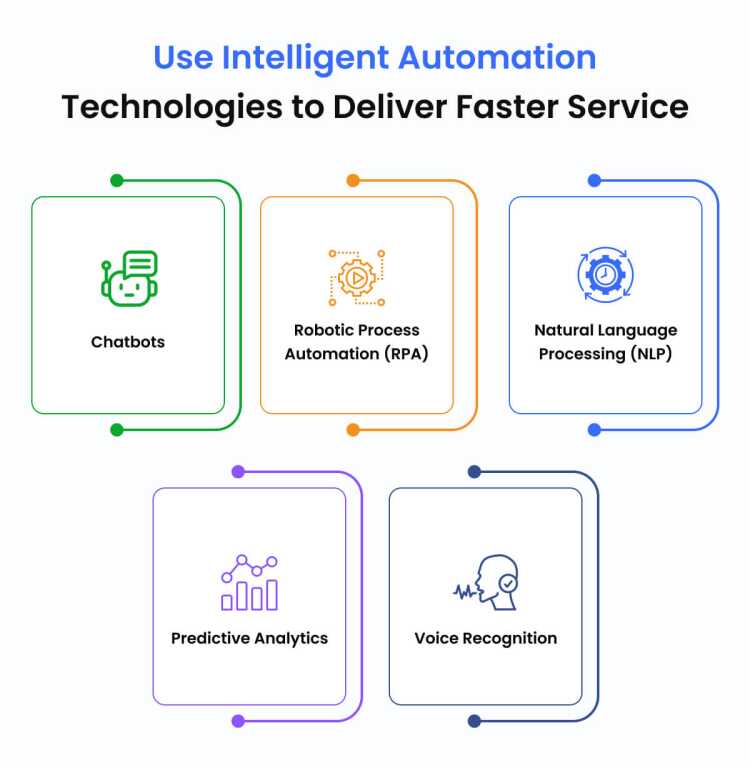
Let’s see how these technologies can be applied:
- Chatbots: Chatbots can be used to provide 24/7 customer service support. They can quickly answer customer queries, handle simple requests, and direct customers to the right department for more complex issues. By automating these tasks, chatbots can reduce wait times and provide faster responses to customers.
- Robotic process automation (RPA): It can automate repetitive and time-consuming tasks such as data entry, document processing, and order processing. By automating these tasks, RPA can reduce manual errors and free up employees to focus on more complex tasks that require human intervention.
- Natural language processing (NLP): NLP can be used to analyze customer queries and automatically categorize them into different categories such as complaints, inquiries, or feedback. It can help businesses quickly identify the type of request and prioritize the response accordingly.
- Predictive analytics: It can be used to anticipate customer needs and provide proactive support. By analyzing customer data, businesses can identify trends and patterns in customer behavior and anticipate their needs. This can help enterprises proactively address issues and improve customer satisfaction.
- Voice recognition: Voice recognition technology can streamline the customer service process. Customers can use their voices to interact with the system and get answers to their queries quickly. It decreases wait times and improves the overall customer satisfaction rate.
3. Measure Your Team’s Performance
It can be a game-changer to skyrocket your customer service standards. Setting up a framework to measure your team’s performance is essential to improving customer service standards for several reasons.
Now, let’s see how you can measure your team’s performance.
- Identify areas for improvement: A performance measurement framework provides a way to identify areas where your team is underperforming or struggling. By identifying these areas, you can create targeted training and coaching programs to improve your team’s skills.
- Track progress over time: It allows you to track progress over time, giving you a better understanding of how your team is performing and whether your improvement efforts are working. It can help you adjust your strategies as needed and ensure that you’re making progress toward your goals.
- Accountability: It creates accountability within your team. When you establish clear performance metrics and expectations, your team members understand what is expected of them and are more likely to take ownership of their work and strive for success.
- Recognition and reward: It allows you to recognize and reward your team members for their hard work and achievements. This can be a powerful motivator and help foster a positive team culture.
- Customer satisfaction: Ultimately, setting up a framework to measure your team’s performance can improve customer service standards by ensuring that your team is meeting customer needs and expectations. By providing excellent customer service, you can build customer loyalty and increase the likelihood of repeat business.
4. Use an Omnichannel Customer Service Strategy
An omnichannel customer service strategy is a customer-centric approach that aims to provide a seamless and consistent experience across all channels.
Below are some reasons why businesses should consider adopting an omnichannel customer service strategy.
- Meet customer expectations: Today’s customers expect to have a choice of channels to interact with a business, and they want to be able to seamlessly switch between channels without losing the context of their conversation. By offering a consistent experience across all channels, businesses can meet these expectations and provide a better customer experience.
- Increase customer loyalty: An omnichannel strategy can help build customer loyalty by providing a convenient, personalized, and consistent experience across channels. This can lead to increased customer satisfaction and loyalty, ultimately resulting in higher revenue and customer lifetime value.
- Improve efficiency: It can help businesses streamline and improve their customer service operations. By using integrated tools and systems to manage customer interactions across channels, businesses can reduce response times, eliminate duplication of effort, and improve the overall customer service experience.
5. Create an Engaging Company Culture
Creating an engaging company culture can have a significant impact on customer service standards.
Here are a few ways you can use to increase customer service.
- Motivated and engaged employees: When employees feel engaged and motivated, they are more likely to be productive, committed to the organization, and provide excellent customer service. They are more likely to go the extra mile to solve customer problems and create a positive customer experience.
- Strong communication: A company culture that values open and honest communication between employees and management can lead to better customer service. When employees feel comfortable communicating with each other and their managers, they are better equipped to handle customer inquiries, complaints, and feedback.
- Empowerment: An engaging company culture can empower employees to make decisions and take ownership of customer service issues. When employees are empowered to solve problems on their own, they can provide faster and more efficient service, which can lead to higher customer satisfaction.
- Focus on customer experience: An engaging company culture that prioritizes the customer experience can help employees to understand the importance of providing excellent customer service. When employees understand how their role impacts the customer experience, they are more likely to take ownership of customer service and strive to provide the best service possible.
6. Recognition and Rewards
There is no doubt that setting up an employee recognition and rewards program can help to improve customer service standards in several ways:
- Motivation: Recognition and rewards programs can motivate employees to provide excellent customer service. When employees feel appreciated for their hard work, they are more likely to go above and beyond to satisfy customers.
- Performance: A recognition and rewards program can also encourage employees to improve their performance. By setting clear performance standards and providing incentives for meeting or exceeding those standards, employees are more likely to strive for excellence in their work.
- Employee retention: A recognition and rewards program can also improve employee retention, which in turn can improve customer service. When employees feel valued and appreciated, they are more likely to stay with the company, reducing turnover and ensuring that customers receive consistent service from familiar faces.
- Teamwork: Recognition and rewards programs can also foster a sense of teamwork among employees. When team members are recognized for their contributions and rewarded for achieving common goals, they are more likely to collaborate effectively to provide outstanding customer service.
Customer Service Standards Checklist
There is no doubt that you need to follow to meet the customer service standard. If you want to take the rule to the next level.
How you can do that? Take a look at the customer service standards checklist that businesses can use to ensure they are meeting their customer’s needs and expectations:
- Accessibility: Is your business easy to reach by phone, email, or in person? Do you have clear and easy-to-follow directions to your location or website?
- Responsiveness: Do you respond to customer inquiries and concerns in a timely manner? Do you have a process in place for handling customer complaints and resolving issues quickly?
- Empathy: Do you show empathy towards your customers’ concerns and needs? Do you actively listen and try to understand their perspectives?
- Professionalism: Are your employees trained to act professionally and respectfully towards customers? Do they represent your business in a positive and courteous manner?
- Knowledge: Do your employees have the knowledge and skills needed to answer customer questions and provide helpful information? Do they stay up-to-date on industry trends and changes?
- Personalization: Do you personalize your customer interactions and make an effort to remember their preferences and needs?
- Consistency: Do you consistently meet or exceed customer expectations across all touchpoints and interactions? Do you have a system in place to monitor and measure customer satisfaction?
By using this checklist, businesses can identify areas where they may need to improve their customer service standards and create a plan to better meet their customers’ needs and expectations.
How Can REVE Chat Help You to Improve Customer Service Standards?
It is a customer engagement platform that offers a range of features to improve customer service standards.
Key Takeaways:
- Real-time Chat: REVE Chat allows you to provide real-time chat support to your customers, which can help you to resolve customer queries quickly and efficiently.
- Multichannel Support: It can provide support to your customers across multiple channels such as website chat, social media, and mobile apps. It can also help you to reach out to customers on their preferred channel, which can lead to better customer satisfaction.
- Co-browsing: Its co-browsing feature allows your agents to see what customers are seeing on their screens. This can help your agents to better understand the customer’s issue and provide more targeted support.
- Proactive Chat: You can set up proactive chat triggers that will automatically initiate a chat with customers based on their behavior on your website. This can help you to reach out to customers who may need assistance but may not have initiated a chat on their own.
- Chatbots: Its chatbot feature allows you to automate routine customer queries, freeing up your agents to handle more complex issues. This can help you to provide faster and more efficient support to your customers.
Overall, REVE Chat can help you to provide a better customer experience by offering real-time support across multiple channels, automating routine queries, and providing more targeted support through features like co-browsing and proactive chat. Sign Up for REVE Chat and take your customer service standards to the next level.

